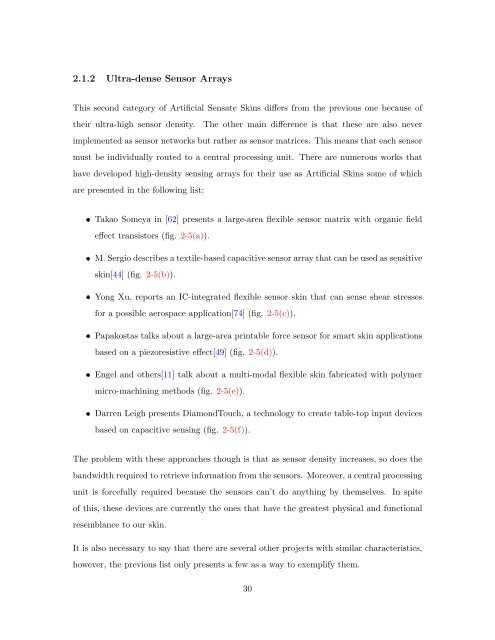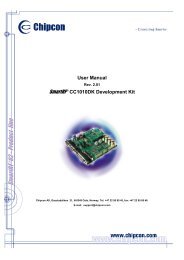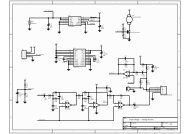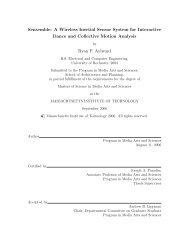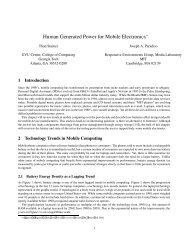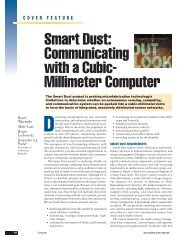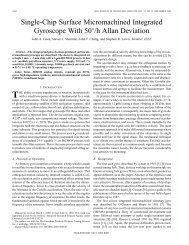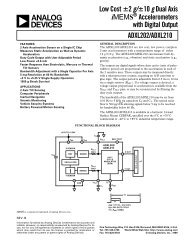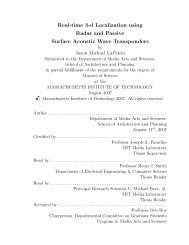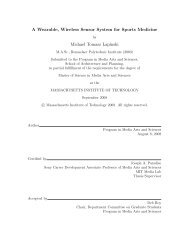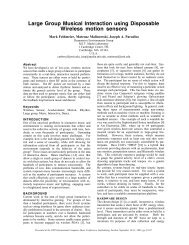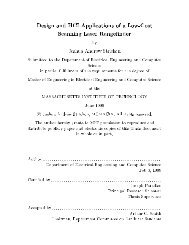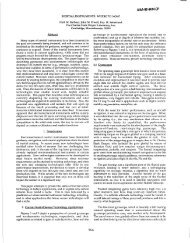S.N.A.K.E.: A Dynamically Reconfigurable Artificial Sensate Skin ...
S.N.A.K.E.: A Dynamically Reconfigurable Artificial Sensate Skin ...
S.N.A.K.E.: A Dynamically Reconfigurable Artificial Sensate Skin ...
Create successful ePaper yourself
Turn your PDF publications into a flip-book with our unique Google optimized e-Paper software.
2.1.2 Ultra-dense Sensor Arrays<br />
This second category of <strong>Artificial</strong> <strong>Sensate</strong> <strong>Skin</strong>s differs from the previous one because of<br />
their ultra-high sensor density. The other main difference is that these are also never<br />
implemented as sensor networks but rather as sensor matrices. This means that each sensor<br />
must be individually routed to a central processing unit. There are numerous works that<br />
have developed high-density sensing arrays for their use as <strong>Artificial</strong> <strong>Skin</strong>s some of which<br />
are presented in the following list:<br />
Takao Someya in [62] presents a large-area flexible sensor matrix with organic field<br />
effect transistors (fig. 2-5(a)).<br />
M. Sergio describes a textile-based capacitive sensor array that can be used as sensitive<br />
skin[44] (fig. 2-5(b)).<br />
Yong Xu, reports an IC-integrated flexible sensor skin that can sense shear stresses<br />
for a possible aerospace application[74] (fig. 2-5(c)).<br />
Papakostas talks about a large-area printable force sensor for smart skin applications<br />
based on a piezoresistive effect[49] (fig. 2-5(d)).<br />
Engel and others[11] talk about a multi-modal flexible skin fabricated with polymer<br />
micro-machining methods (fig. 2-5(e)).<br />
Darren Leigh presents DiamondTouch, a technology to create table-top input devices<br />
based on capacitive sensing (fig. 2-5(f)).<br />
The problem with these approaches though is that as sensor density increases, so does the<br />
bandwidth required to retrieve information from the sensors. Moreover, a central processing<br />
unit is forcefully required because the sensors can’t do anything by themselves. In spite<br />
of this, these devices are currently the ones that have the greatest physical and functional<br />
resemblance to our skin.<br />
It is also necessary to say that there are several other projects with similar characteristics,<br />
however, the previous list only presents a few as a way to exemplify them.<br />
30


